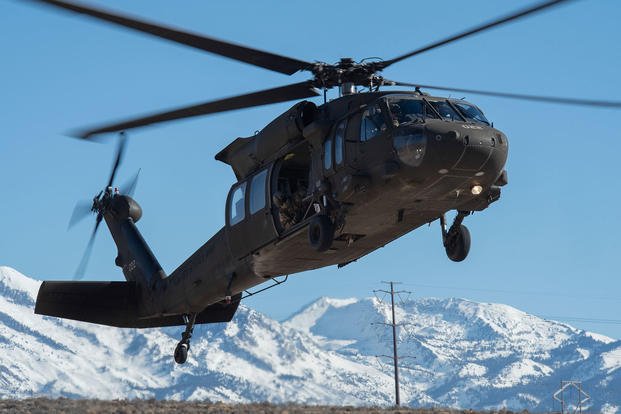Sikorsky was dealt a blow Thursday as the U.S. Army announced it was scrapping plans for an armed scout helicopter that the Stratford-based manufacturer and its parent company Lockheed Martin hoped to produce.
The decision comes a year after Sikorsky lost out on the chance to build a new utility helicopter for the military branch. Sikorsky's president previously stated the chance to build the utility helicopter — a replacement for the Black Hawk — and the scout helicopter that could be used for surveillance and reconnaissance as "existential" for the company's future viability. Building a new fleet of scout helicopters could have brought billions of dollars in Connecticut's direction.
In a statement Thursday evening, Sikorsky and Lockheed Martin maintained the company's "X2" helicopter design offers unparalleled speed, range and agilityh, and that it is "confident" in the design for both U.S. and international needs.
"To provide the U.S. military and its allies a decisive advantage to deter conflict now and in the future, there must be a transformational improvement in rotorcraft systems capabilities — and a strong engineering workforce that can strengthen the nation's leading edge in rotorcraft innovation," the Sikorsky statement read. "We are disappointed in this decision and will await a U.S. Army debrief to better understand its choice."
In a joint statement, Connecticut's Congressional delegation said they want a detailed explanation from the Army on future aircraft capabilities and how "the exceptional and seasoned workforce at Sikorsky for generations to come" would be utilized.
"We are extremely disappointed that the Army has decided to walk away from the (Future Attack Reconnaissance Aircraft) program," the statement read. "We have been told on multiple occasions by the Army that FARA was their number one priority. This is a complete reversal of that position."
In a Thursday announcement, the Army called the decision a "rebalance" that was based on "lessons learned and a sober assessment of the modern battlefield" in its words. While the Army will not proceed with a new scout helicopter and will end production of the UH-60V version of the Black Hawk, but will commit to a new contract to purchase additional UH-60M Black Hawk helicopters and promised "new investments" its UH-60L Black Hawk fleet without providing immediate specifics.
The Army indicated it will increase its use of drones and space-based surveillance systems as an alternative to the armed scout helicopter. Sikorsky had offered the Raider X prototype, with Bell in the competition as well with its 360 Invictus helicopter design.
"We are learning from the battlefield — especially in Ukraine — that aerial reconnaissance has fundamentally changed," said Gen. Randy George, chief of staff of the Army. "Sensors and weapons mounted on a variety of unmanned systems and in space are more ubiquitous, further reaching, and more inexpensive than ever before. I am confident the Army can deliver for the Joint Force, both in the priority theater and around the globe, by accelerating innovation, procurement and fielding of modern unmanned aircraft systems, including the Future Tactical Unmanned Aircraft System, Launched Effects, and commercial small unmanned aircraft systems."
Christine Wormuth, secretary of the Army, stated the Army remains "deeply committed to our aviation portfolio and to our partners in the aviation industrial base."
While Sikorsky anticipates decades more work building Black Hawk helicopters and variants for the U.S. military and foreign countries, in 2022 the Army chose a Bell tilt-rotor called the V-280 Valor as its future workhorse for the eventual day when the Black Hawk is sidelined or phased out entirely. Analysts have cited the V-280's longer range as a key driver for the Army decision, in anticipation of any future conflicts in eastern Europe or the Pacific Rim where aircraft would have to traverse greater distances between bases.
Sikorsky is now building a new fleet of heavy-lift helicopters for the U.S. Marine Corps called the CH-53K King Stallion, in a contract valued in excess of $37 billion at last estimate by the Government Accountability Office. Work is largely complete on a new fleet of helicopters for the White House.
___
(c)2024 the New Haven Register (New Haven, Conn.)
Visit the New Haven Register (New Haven, Conn.) at www.nhregister.com
Distributed by Tribune Content Agency, LLC.












